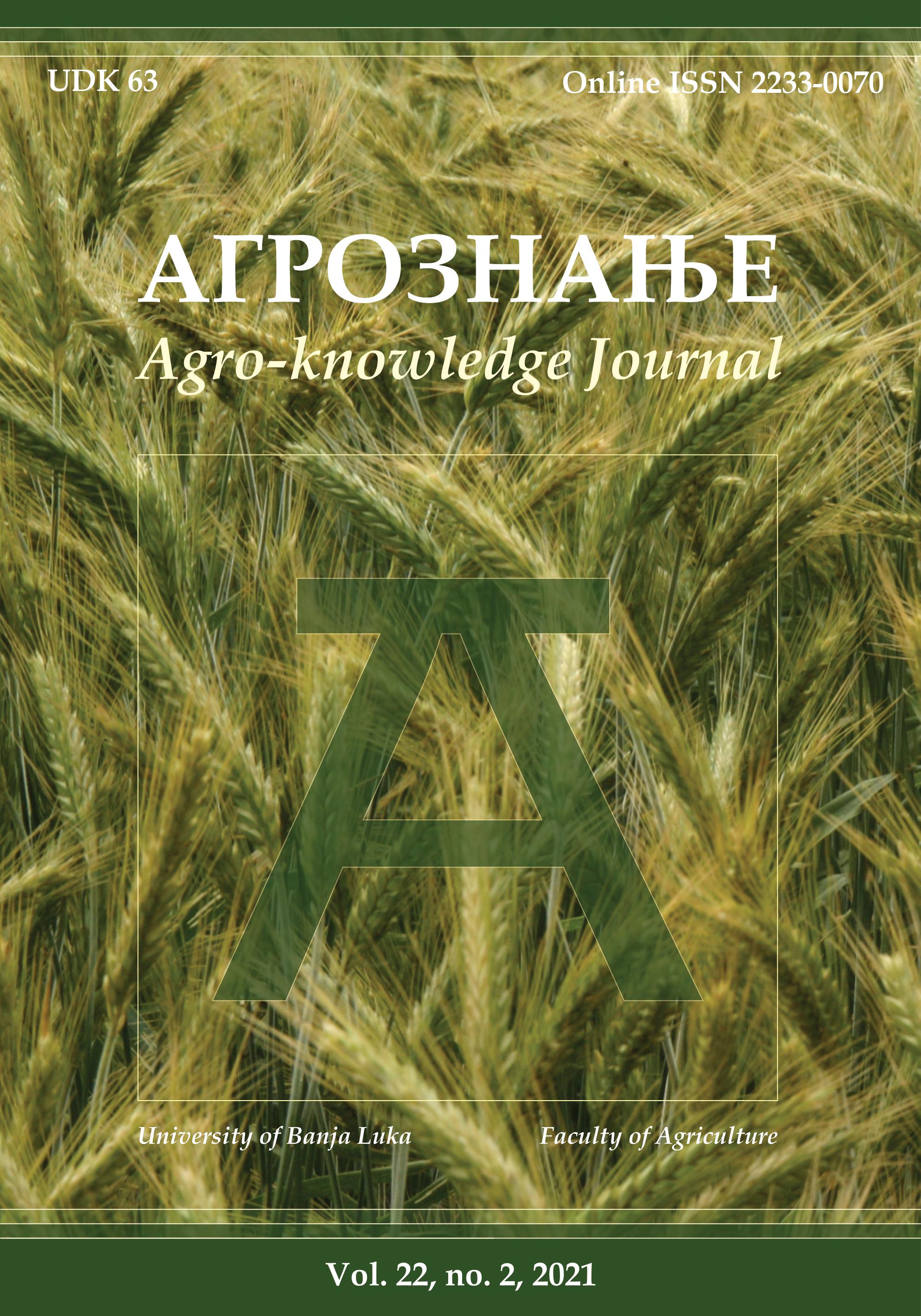Effects of autumn and spring primary tillage on soybean yield and 1000-grain weight in the agro-ecological conditions of Serbia
Утицај јесење и прољећне основне обраде земљишта на принос и масу 1000 зрна соје у агроеколошким условима Србије
DOI:
https://doi.org/10.7251/AGREN2202037BAbstract
Soybean yield depends on the selection of cultivars, soil fertility, applied cultivation practices, and agroclimatic conditions over the years. High-quality and timely primary tillage is essential for stable development and high yields of soybean plants. The effect of autumn and spring primary tillage on soybean yield and 1000-grain weight was examined in a three-year study (2013-2015). The trial included cultivars with different maturity periods, developed at the Institute of Field and Vegetable Crops Novi Sad: Valjevka and Galina 0 maturity group, Sava and NS Maximus I maturity group, Rubin and Venera II maturity group. Trial subplots were prepared using different periods of primary tillage, which was conducted in autumn (November, 01–05) and spring (March, 25–31). The highest yields and 1000-grain weight were obtained after autumn primary tillage in all the three study years. Yield decrease by 2.72% to 38.91% and 1000-grain weight decrease of 1.33%-11.93% were recorded after spring primary tillage.
Key words: soybean yield, 1000-grain weight, primary tillage.

